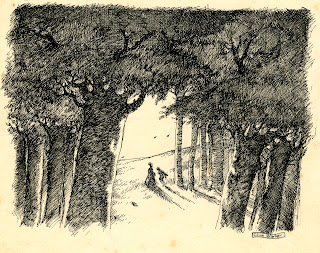No character in Clive Barker’s Abarat books has transformed more than Candy Quakenbush… She has gone on a journey like no other from the nowhere town of Chickentown America to the wonders of the Abarat. Candy’s journey has been one of transformation as she shakes off the banality of everyday life to explore the secret that has existed within her all of her life.
The first time we see Candy painted by Clive Barker, it is within the triptych showing Candy in her everyday life. She is dressed in the drab clothes of an ordinary teenage existence. Candy already has a beauty that she has yet to explore, everything is trying to conspire to keep her life ordinary and banal. The chickens that surround Candy are like bad Victorian wallpaper, a print of monotony to express just what Chickentown means to Candy.
As Candy journeys into the Abarat and meets her friend Malingo she somehow discovers colour and a new vibrancy. She starts to grow and become more of a woman and a butterfly effect starts to show off the inner beauty, Candy has always carried with her.
Clive Barker takes us on this journey with his vivid use of colour and style within these paintings. Colour and its freedom of expression is one of the most important single elements within the Abarat books. It is hard to see this on the page, as the images are inch big. When you see the works in the flesh and you see that these paintings are often at their smallest 48 x 60 inches. The characters and their worlds start to become much more real and lifelike.
Within Days of Magic, Night of Wars, volume 2 of the Abarat books, Candy has started to become a woman. She has shed the skin of the banality of Chickentown and she now shines in the paintings the Clive Barker creates. It is important for the reader to see this change and evolution in Candy.
There is an almost female David Bowie look to the transformation of Candy. Her eyes match those of the thin white duke and her evolution through different styles of clothing echo this continued freedom of identity.
The final image is from Absolute Midnight the 3rd book of the Abarat, just has just published and shows that Candy Quakenbush is no longer the girl from Chickentown, USA. She is a peacock a phoenix of colour and identity, she has transformed into an style all of her own, more Abarat then America.
Candy will continue to grow as she gets nearer to her goal, the Abarat will never be the same, Candy will never be the same and perhaps America will never be the same.














